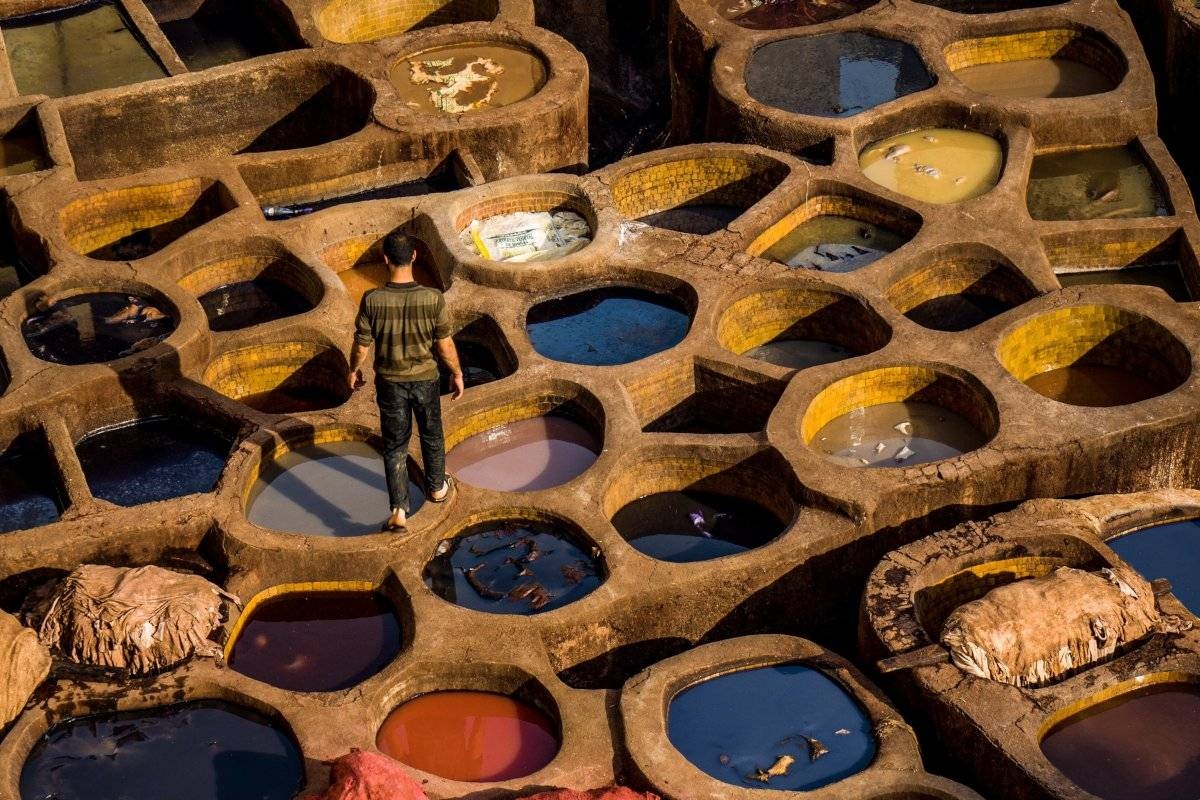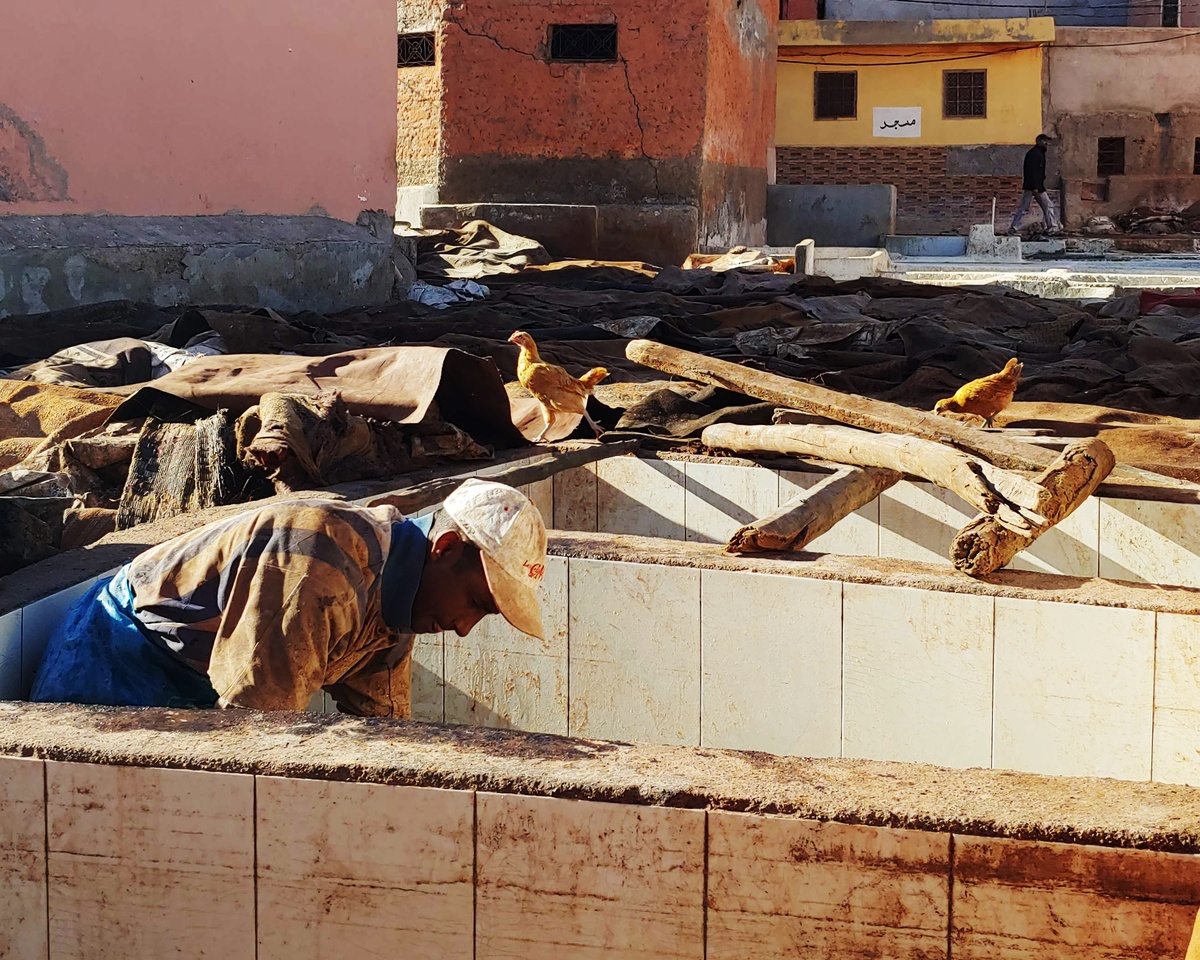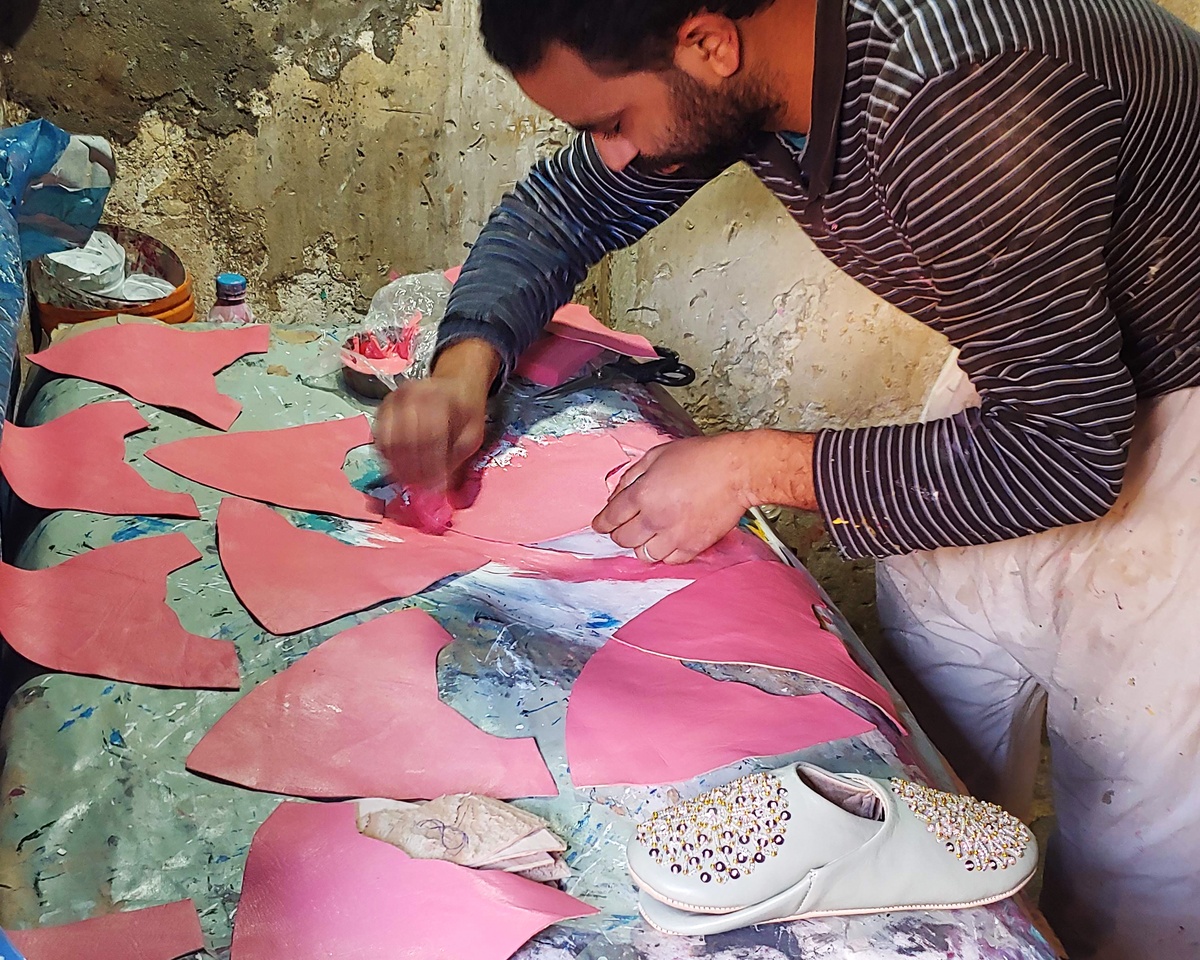
Visiting Morocco: The fake guides in Marrakech and the leather crafts
 © Maxime Boudrias
© Maxime Boudrias
- Share
Among tourist destinations in Morocco, Marrakech is the most visited city. And, where there's tourism, there's also scams!
It is, however, a place rich in its traditions and incredibly full of secrets to discover, such as what hides behind the craftsmanship of the countless leather items you will see all over in the medina. The authentic experience of being able to examine and handle the incredible work of these men who use techniques of the pre-industrial era.
Since it's impossible to visit these places without being noticed by vultures ready to do anything for a little money, here are my tips for not missing out on the hidden treasures of the city by suggesting a safe visit to the historical tanneries of Marrakech.
Beware bogus guides!
During your stay in Marrakech, you will inevitably be approached by all kinds of people, presenting themselves as good-hearted tourist guides – even offering their services for free.
The idea is to accompany you on a short tour of the surrounding area and then take you to their skilled friends shops to make you spend money, under pressure to buy immediately. Even before you have time to understand anything, they will go as far as to block the exit, putting articles in your hands while trying to extort money. It's unpleasant, frankly, and best avoided.
Never give these individuals money
While it is excellent as a tourist to encourage the local economy, these piranhas are highly despised by honest traders and greatly harm the tourism industry in Morocco, as they can make you want to never set foot there again.
A potentially unpleasant experience
Even if they tell you at the beginning that the visit is free, it is not true. They will ask you for money at the very end. If you refuse, they will try to make you feel guilty using the following phrases:
- I've got to feed my kids
- You've just wasted my time!
And if you don't give them enough or nothing at all:
- You're a terrible person!
- Go screw yourself!! (Yep, been there.)
Unfortunately, most tourists succumb to the pressure of these tricks and end up buying something they don't need or giving them money just to be able to leave the area in peace.
How to safely tour the tanneries of Marrakech

Head to the Bab Debbagh district, a 15-minute walk from the centre of Marrakech's medina.
Marrakesh's tanneries are an excellent alternative to conventional attractions. By avoiding the pretend guides, it is possible to visit these traditional places in peace, if you are well prepared:
- Find a guide: Real guides wear official badges and it's better asking a person you can trust, like the employees of your hostel. Every Moroccan working in tourism, knows well the colorful tanneries and the ideal way to visit is to take a licensed guide to explain all the interesting aspects in a friendly and professional manner.
- The smell of tanneries: For the sensitive, take a bouquet of mint by holding it in front of your nose. All official guides will offer one before the visit.
Duration and price to visit the tanneries of Marrakech
To visit the tanneries of Marrakech, plan on spending about 1 hour and a budget of 30 to 50 Dirhams, which is less than 5 €.
If you decide to go without a guide, you can stay as long as you want for free, but you may be constantly badgered. It is possible to take a guide at the entrance by negotiating the price in advance, around 20 Dirhams. However, it is recommended to choose an official guide to ensure the quality of the visit.
Centuries-old leatherworking know-how
The skins are initially whitewashed to remove any traces of hair. They are soaked for a long time in large terracotta or concrete vats for the newer ones. These open vats are filled with water, pigeon droppings and salt. This shock treatment will give the skins flexibility, strength and above all the ability not to rot.

Bravo to all the workers who toil in extreme conditions. Here, we get as close as possible to them and we see that their skilled jobs are very difficult.
Go out of respect for these men, even if surrounded by the scammers in search of some Dirham. They will share with the workers anyway.

The skins are then cleaned using ears of wheat and then colored. Although with today's market, the use of synthetic coloring is frequently used, this step is still done in a very traditional way using many natural products, such as:
- Poppy: to dye skins red
- Henna: for the orange colour
- Indigo or cobalt stone: for blue
Once dyed, the skins are spread over large flat stones in the sun for drying, then beaten to be softened and scraped to remove any residue, making them perfectly smooth.
End of the visit: Expect a trip to the leather workshop
Your guide will inevitably end the visit in a shop, where they will try to sell you carpets and everything full of leather items at exaggerated prices.
If you are tempted, start trading by dividing the advertised price by three. Remember that you have no obligation to buy, even if the seller gets upset. In the event of a purchase, you can request a receipt well below the price paid for customs, thus avoiding paying taxes on arrival home.
Tips for negotiating in Morocco
- Ask for several items at once: To give you a general idea of the prices and to avoid showing your interest in a particular item. It also means they have to work for their money!
- Say you have seen a better one elsewhere: Cut the price directly into 3, saying that another place had a similar item at that price, and then keep on walking, they will usually call you back.
- Take the right amount out of your pockets: By showing the exact amount of your money in cash, it will motivate them to close the sale and save you from attracting unwelcome attention.
- Pretend to leave the store: Never fails. They will try to keep you on the hook, lowering the price significantly.
Marrakech: A Unique Experience
The city of Marrakech leaves no one indifferent - you either love it or hate it. One thing is certain, it is full of surprises, scents, colors, and things to do. During my first experience, I thought I would never want to come back, but I learned that it is fine when you know the rules of the place.
Find out as much as possible to make the most of your stay with complete confidence!
FAQs
Where is the tannery district in Marrakech?
The tanneries of Marrakech are located in the Bab Debbagh district, in the northeast of the medina. The Jemaa el-Fna square is a popular landmark and is only 1.6 km from the tanneries.
Here are the best ways to get there:
- Walking: The tanneries are about a 15-minute walk from Jemaa el-Fna square. It is easy to get lost in the medina, so use your phone GPS to help you find your way. If you don't have internet access, check out my response on the best ways to get mobile data in Morocco for more information.
- Taxi: A trip from Place Jemaa el-Fna costs about 10 to 20 dirhams (up to 2 €). Make sure the driver turns on the meter before getting in to avoid scams.
If you don't have a guide, you may be solicited by people with bad intentions in the area. For a successful and stress-free visit, I recommend consulting my practical travel guide on Marrakech tanneries. You will find information on associated risks and precautions to take for a peaceful experience.
Is Marrakech a Safe City?
Marrakech is considered a very safe city. If it's your first experience in a foreign country, you might still feel some insecurity in the Medina, despite the high number of tourists, with nearly 3 million visitors per year.
In Marrakech, there is a lot of poverty, and it's common to encounter beggars asking for money on the streets. violent crimes are very rare and generally do not target tourists. Additionally, the police presence is strong, laws are strict, and residents adhere to them.
Still, remain vigilant against pickpockets and be cautious of fake tour guides.
What to Avoid and Watch Out for in Marrakech
To ensure your safety, here are some tips to follow in the Medina:
Avoid the Mellah Quarter
The Mellah (or Jewish) quarter south of Place Jemaa el-Fna is considered a bit more conflicted, according to locals.
Safety at Night in Marrakech
Street lighting is often inadequate, and some smaller streets can be very dark. It's best to avoid venturing into the Medina after sunset, or take a taxi to get around.
If you must walk in the dark, be cautious, carry little money and no jewelry, and use a small flashlight instead of your phone to avoid drawing attention.
During the day, the atmosphere changes completely, and the crowds in the streets make you feel safer. It's best to stay out during daylight hours.
Beware of Strangers
Be cautious of people you meet in Marrakech. They might try to scam you by taking you on a tour of shops or pretending to be guides. Also, be wary of fake jewelry, counterfeit antique currency, or offers of drugs hidden from view.
Protection of Documents and Valuables
Always keep copies of your identification documents and store the originals in a safe place. Keep your valuables out of sight and be mindful of your personal belongings.
In Conclusion
Petty crimes, nighttime insecurity, and the need to stay vigilant are undoubtedly the least appealing aspects of Marrakech, but it would be a shame to miss out on the experience of the riads and the Medina because of these issues, which are found in all major cities around the world. Compared to other cities in Morocco, such as Casablanca or Fès, Marrakech is one of the safest destinations.
Is using a travel agency safer than driving yourself in Morocco?
You don't need to hire a travel agency or guide to explore the country by car; the roads in Morocco to Merzouga are generally safe. If you have an international driver’s license and feel confident behind the wheel, driving yourself allows you to experience Morocco at your own pace, unlike organized tours that can rush through the landscapes, culture, and attractions.
It's recommended to travel during the day and stick to the main roads in Morocco. Secondary roads are often poorly maintained and can be dangerous at night due to low lighting, debris, or stray animals that may be on the road.
Plan your route before you leave and use MAPS.ME (an offline map) or Google Maps if you have internet access on your phone to help you navigate.




